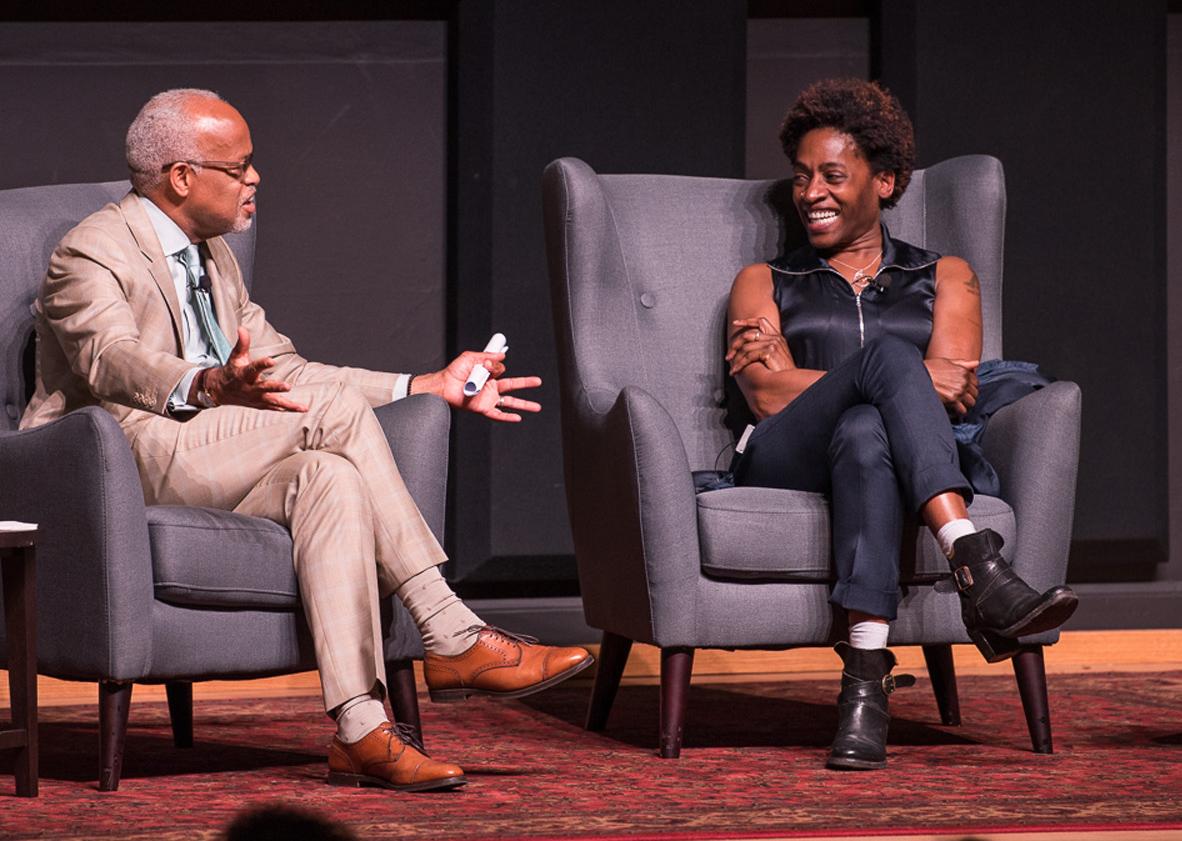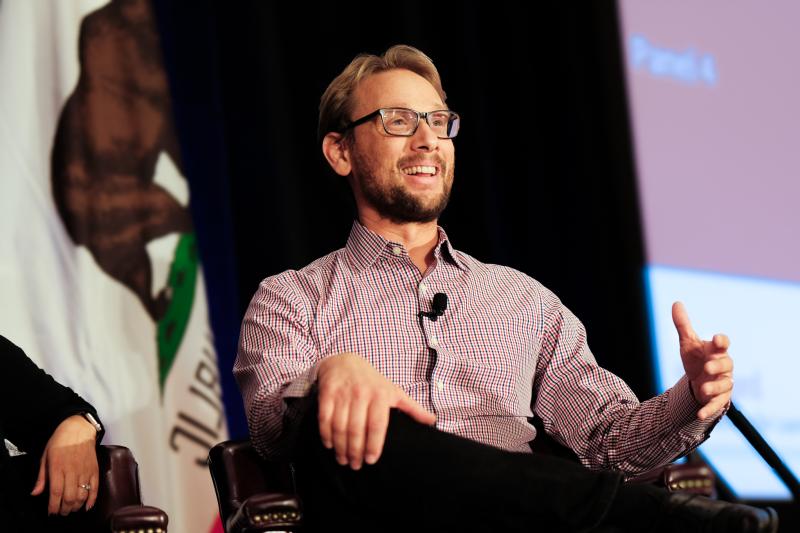
Good books, like teachers, acknowledge children’s lives, says author Jacqueline Woodson
In her National Book Award-winning verse autobiography, Brown Girl Dreaming, Jacqueline Woodson writes that she was a slow reader, an exasperating student who sometimes missed the point of a teacher’s lesson. Yet by age 7, Woodson knew that she wanted to be a writer.
Those two facts seem contradictory but in fact anchor her writing practice, Woodson told educators, students and fans during the Cubberley Lecture on May 23 at Stanford Graduate School of Education (GSE).
“You have to read slowly in order to be a writer,” she said. “You learn to listen to the silences and to the unsaid things.”
Woodson is cherished in the world of young-adult literature for telling the untold stories of diverse American lives with generosity, tenderness and hope. The protagonists of her more than two dozen books live in foster homes (Locomotion); cope with orphanhood (Miracle’s Boys) and racial isolation (Feathers, Maizon at Blue Hill); drift amid the diaspora created by Hurricane Katrina (Beneath a Meth Moon); and seek ways to proclaim their identity in a world that punishes African-Americans for speaking boldly (After Tupac and D Foster).
Often, they learn, like Woodson herself, to find strength in creative endeavor – through reading, writing or making visual art. Always, they learn – and teach – how to care for themselves and each other.
“I wanted kids to have stories in the world that reflected their lives,” Woodson said.
Musing on the common observation that children’s books function as “mirrors and windows and sliding-glass doors,” she recalled that “I grew up with a lot of windows into white culture. And not very many mirrors.
“That’s one of the things teachers do for us: They see us. Brilliance is passion recognized,” she said. “For some of us the passion gets shaped into the brilliance. And some of us never get seen.”
Woodson’s family was part of the Great Migration of early and mid-20th century black America, moving from the South to Ohio and, after her parents’ separation, temporarily back again. The family worked hard to maintain stability and order, and what Woodson called “the post-traumatic stress disorder of Jim Crow” rendered many tales too difficult for her elders to tell.
“My uncle was incarcerated. It was a very shameful thing,” Woodson said. “We said [such people] ‘moved upstate.’ We knew brothers and cousins and uncles were ‘moving upstate’ long before we started hearing about mass incarceration.
“I had spent a lot of my childhood not having a book that was a mirror,” she said. “I grew up thinking I was one of very few people who had someone in prison.”
Such experiences and feelings inform Woodson’s books, even when the characters are not explicitly autobiographical.
“One thing you learn about writing for young people is there has to be hope somewhere,” she said. “There doesn’t have to be a happy ending, but they have to close the book and feel hopeful.”
Jennifer Wolf, a senior lecturer at the GSE who studies the role of literature and the arts in learning, praised Woodson for “reminding us of the importance of using literature to make a better world.
“Reading is really good for us as human beings,” Wolf said. “Some of the most recent research is focused on the benefits of pleasure reading. How do you teach pleasure reading? Young-adult literature has that all taken care of. Its whole purpose is to have young people read pleasurably.”
The Cubberley Lecture, established in 1938 to highlight critical issues in education, included a discussion moderated by Stanford Professor Harry Elam, senior vice provost for education, vice president for the arts and vice provost for undergraduate education. Students in the GSE received copies of Brown Girl Dreaming, and the audience included students in Wolf’s Education 111: The Young Adult Novel.
Dean Dan Schwartz introduced event – part of a year of programming around the school’s 100th anniversary. The Heising-Simons foundation co-sponsored.
In a question-and-answer period, Woodson gave thoughtful tips to the many aspiring authors in the room, who ranged from retired Superior Court Judge LaDoris Cordell, former assistant dean of Stanford Law School, to kids including 8-year-old Auden Jones of Menlo Park.
“Start from the beginning,” Woodson advised Cordell. “Living comes in small moments. Memory is these small moments with all this white space around it. You don’t remember your life as a narrative. Try to write one small moment a day.”
The portions of Brown Girl Dreaming that are written in haiku are actually writing lessons, Woodson said. They speak to the importance of detail, of silences and of inviting the reader’s active participation.
For Jones, Brown Girl Dreaming’s poetry is part of its appeal.
“It’s not a listing,” Jones said. “And it’s not just happy things, but things that kind of change the story into something else.”



